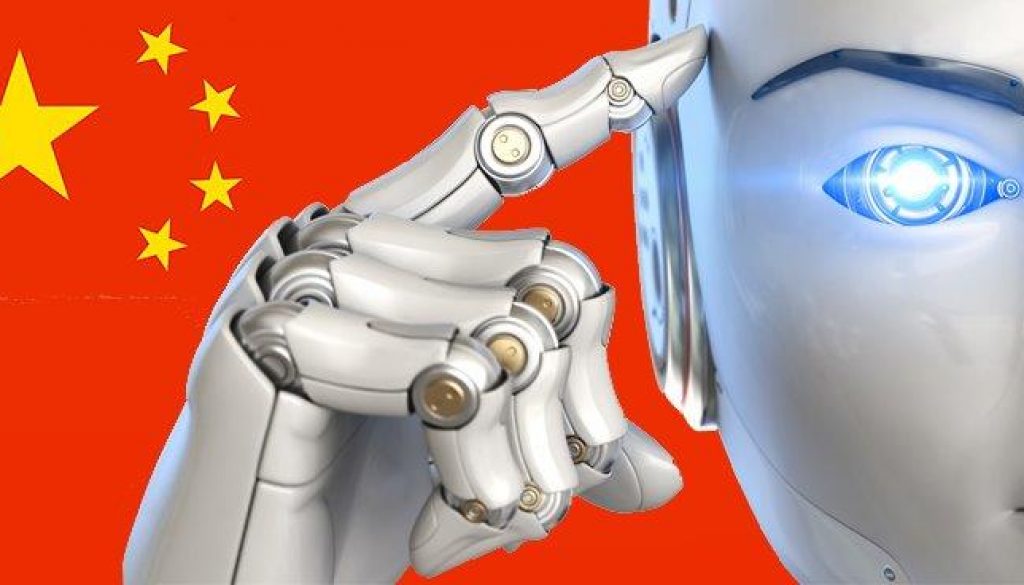Many of the world’s most exciting technological breakthroughs originated from Silicon Valley. Now, the Chinese government is pouring resources to build its own hub for Innovation and rival American Industries in technological capacity. The Chinese blueprint envisions a world class city cluster that would combine Shenzhen’s startup culture, Hong Kong’s financial centers, Guangzhou’s manufacturing industry as well as Macau’s and Zhuhai’s leisure and tourism. While it sounds impressive, how successful will this play out and under what conditions? And can China replicate the American experience and create its own Silicon Valley?
A decade ago, China was widely perceived as an imitator in technology and not an innovator. That view is now changing as Beijing is catching up in the tech race. President Xi Jinping has made the nourishment of technological capacities a key priority, not only to regain China from its dependency on foreign supplies, but also to turn it into a leader in innovation, and sure enough China is gaining ground on its rivals in the tech realm. The country has achieved significant achievements during the past few years in this field, including its development in hypersonic missiles, human gene editing trials and quantum satellites.
Of the many emerging technologies China is assisting in further developing, artificial intelligence (AI) is perhaps the most significant for Beijing as well as its adversaries. What makes AI fundamental is that much like Aerospace technology or the internet before it, AI will have applications in the military and civilian life, and will likely revolutionize both. In the civilian world alone, AI has practically unlimited uses. The technology already helps power smartphone applications such as visual and audio recognition software and digital personal assistants.
As global data collection rates continue to grow exponentially, AI algorithms will inevitably have to take over processing and managing the glut of information. While research and development on AI continues, it will eventually work its way onto the battlefield in industries such as self-driving vehicles, autonomous tanks and perhaps even robotic soldiers.
To gain an edge in the research and development of build technologies, China is looking to construct its own Silicon Valley. The Beijing government has pledged to turn the Pearl River Delta, also called the Greater Bay Area, which contains 11 cities in Southern China into a global hub for innovation and technology. The Pearl River Delta is already the country’s most economically dynamic region containing the tech hub of Shenzhen, the financial center of Hong Kong and the leisure Hub of Macau. The initiative and the Pearl River Delta are part of China’s overall push to shift away from low-end manufacturing and build an economy driven by consumption and innovation, which is a necessity if the country is to escape the middle income trap. Moreover, the initiative is also going to bring together the two former European colonies of Hong Kong and Macau (now semi-autonomous territories) into closer economic integration with the rest of China.
To turn the area into a Chinese Silicon Valley, the cities and the Pearl River Delta must be integrated into one giant web of urban clusters -a megacity-, with mega infrastructures as well (as shown in the pic below)
As these infrastructure projects get implemented, the Chinese government believes that in the next 15 years the cluster of cities and the Pearl River Delta will transform into a world-class region that would rival Western counterparts such as San Francisco and New York.
Home to 70 million people, the Pearl River Delta has 10 times the population of the San Francisco Bay area and more than six times that of the New York Metropolitan area, but a much smaller GDP per capita of 1/5 and 1/4 respectively. All that will change by 2035 as the Chinese government pours national resources into the Pearl River Delta and its tech sectors in order to achieve rapid growth.
However, a place like Silicon Valley exists not only due to infrastructure. Innovation comes from people, and the attraction of a skilled, educated and talented workforce which requires an open and free environment. One cannot simply construct a Silicon Valley, it must be nurtured. On that note, there are several criteria for a Silicon Valley to emerge and flourish such as distance, funding, political freedom and education.
The first is distance: Being far from a country’s power centers, both political and financial, allows thoughts and ideas to develop freely. This is why Silicon Valley sits on the opposite side of America far away from both Washington and New York. Going by this criterion, the Pearl River Delta is remote enough to function independently. The city of Shenzhen is almost 2,000 kilometers from the political hub of Beijing and over 1,200 kilometers away from the financial Capital Shanghai. That distance has played a part in the success story of Shenzhen, which has produced many startups that have gone on to become successful tech power houses, including Huawei, Tencent and DJI.
The second criterion is to having enough investors: investors must be able and willing to assume risks. In the United States in 2019, the venture industry deployed over 136 billion dollars in American based companies. No other nation comes even remotely close to that figure. Even when measuring the Venture Capital Investments per capita, the United States America hits $282 while China sits at $20. So to keep pace, Beijing must employ its hybrid model of capitalism to stimulate investment, growth and competition. The way the Chinese system works is that the government outlines areas of priority and then provides state owned businesses with incentives to encourage competition. This is the reason why Baidu, Tencent, and Alibaba compete with one another to push the boundaries in AI, Auto Tech, biotech and other relevant fields. Based on the above criterion, China seems to be doing sufficiently well with its funding schemes.
The third criterion is the ability to visualize the future that the technology might bring. When envisioning things that are outside our everyday experiences, there is little that can be expressed with words. Visual input is necessary to trigger the imagination. To promote a Silicon Valley on the public consciousness, China needs a cultural Hub in the proximity of the Pearl River Delta. That’s why Hollywood and Silicon Valley sit near each other and maintain close links. Beijing needs to replicate that relationship. The progress here is mixed; Chinese films are performing decently on the domestic box office but find little global success, that said, Chinese video games and particularly mobile games are embraced around the world.
The fourth and fifth criteria are more serious, and are related to freedom of speech and the quality of universities. Here, China falls behind. This has had a bad effect on the quality of scientific output; despite a population of 1.4 billion.
By these measurements, China still has a long way to go if it is serious about nurturing a sustainable Silicon Valley of its own. Nevertheless, Beijing also has crucial advantages that might help in the long term. The demographics size of the nation could make it an even match for the United States in terms of developing and adapting emerging technologies. Given that the country’s population is almost 1.4 billion and that data privacy is a low priority for Beijing, China offers its AI companies a tremendous benefit over their American counterparts by giving them access to a massive pool of data. No other country provides its tech industry with such an advantage. In light of this, China is advanced enough in its tech industry which could give Silicon Valley a run for its money in terms of market share, but this requires certain measures on several fronts to enhance innovations in the tech industry.



